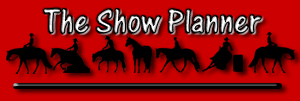INTERPRETING FEED TAGS (part 3)
By Eleanor Richards
Copyright © 2004
We have been learning how to read a feed tag. Last month we studied protein. This month we will look at the next item listed on the tag under GUARANTEED ANALYSIS - fat.
Fat, as a feed ingredient, provides essential fatty acids, which help the horse absorb vitamins A, D, E and K. It is also necessary for the health of skin and coat. But, the most popular use of fat in equine nutrition is as a source of energy.
Fat is about 2 ¼ times more energy dense than protein or carbohydrates. This means you can feed less…and in horse nutrition the less concentrate you feed the better off the horse. Remember, their digestive system is designed to utilize forage not concentrates.
Research has established a level of 6 to 10% fat in a normal horse's diet will give beneficial results. Horses have been fed as much as 20% of their diet in fat without long-term detrimental effects, but feeding this amount is not economically feasible when a lower amount can yield the same benefits.
We have to do some math to figure the daily percent fat in a horse's diet…just like we did with protein last month. For example: every day you are feeding 15 pounds of hay that tested 1.98 % fat and 8 pounds of a commercial feed mix that says 3.0% fat on the feed tag. Take 15 pounds times the 1.98, which equals 29.7 units. Then take 8 pounds times the 3.0, which equals 24 units. Add the 29.7 to the 24, which equals 53.7. Divide the 53.7 by 23 (total pounds fed for the day - hay and concentrated added together), which equals 2.33% fat in the horse's daily diet. This diet would be fine if the horse is at maintenance activity level. A performance horse would lack energy, have no stamina, a dull hair coat and probably be in poor body condition on this diet.
Fat is utilized by the horse's digestive system differently than carbohydrates.
Carbohydrates produce energy using anaerobic metabolism. This type of energy does not need oxygen and is produced very quickly. But, feeding excessive amounts of carbohydrates in an effort to increase energy may result in laminitis, founder and colic.
Fat produces energy using aerobic metabolism. This type of energy uses oxygen and the energy is released slowly. Once the muscles are trained to utilize this type of energy the performance horse does much better. The onset of fatigue is delayed, because the energy is slowly being used as opposed to the quick burst of energy that is provided by carbohydrates.
The amount of fat stated on the tag may be as low as 2.0% and as high as 10%…or more. Notice the amount stated is the minimum amount that will be available in that product. Keep in mind the higher the percentage of fat the less you will have to feed to meet energy requirements.
Supplemental fat sources are vegetable and animal fats. The horse's digestive system can utilize all of them fairly efficiently. Vegetable oil, such as corn or soy oil, is up to 95% digestible. Animal fat is about 75% digestible.
Within the category of vegetable fat sources are products like rice bran and flax seed. They are primarily used in commercial fat supplements which are top dressed on the regular diet. These products will have a high fat content stated on the feed tag…some as high as 24% or more.
Palatability of fat is a concern. Horses seem to like corn oil the best, with soy oil as the next choice. Animal fat is the least palatable. If the product has a high fat content care must be taken it is kept fresh and stored properly.

